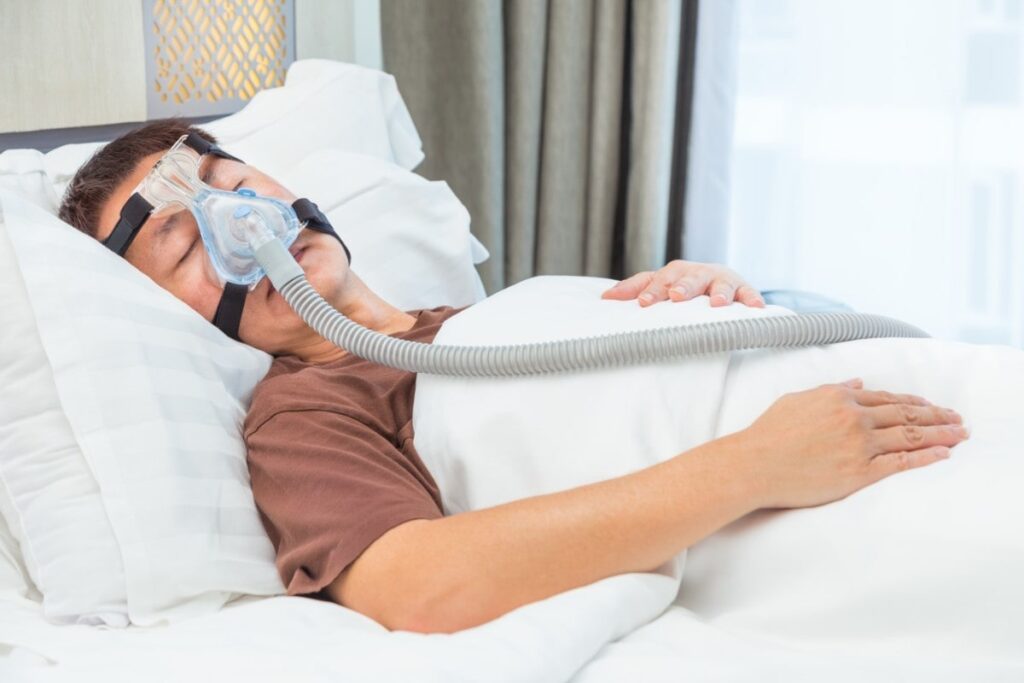Maintaining the cleanliness of the mask is important not only for the durability of the product, but also to provide the most effective method of therapy and comfortable treatment during the night. A face mask used in CPAP therapy healthy for those who suffer from sleep apnea needs to be cleaned and replaced frequently as the quality decreases quickly, and bacteria build up. Below are some tips when it comes to the proper and general care for your CPAP mask useful guide in enhancing its life span as well as promising an effective use.
1. Daily Cleaning Routine
It is therefore mandatory that daily cleaning becomes part of your plan if you are going to effectively use the CPAP mask. As a suggested cleaning technique, you should only clean the mask, cushion, and head gear with warm water and mild soap after every use. It is recommended not to use highly alkaline detergent or soap with perfume because these are sticky on the skin and may affect the skin or the mask’s quality. Wash well to avoid leaving residues of soap on the fruits or vegetables.
2. Weekly Deep Cleaning
Daily, clean the mask and other accessories that relate to the CPAP; However, wash the mask more contrastingly at least weekly. Remove the individual parts of the mask as recommended by the mask manufacturer. Use a mild solution of warm water and vinegar. There is 1 part mask to 5 parts water and the parts need to be soaked for about 15-30 minutes. Vinegar assists in the reduction of fats and other deposits that might set in. Once done, all the used parts should be washed with clean water, and then dried naturally in a place where the sunlight does not penetrate.
3. Replace Components Regularly
There are primary components of the equipment which include the mask cushion, head gear, and tubes. Such components should be checked occasionally to ensure that they have not been affected either positively or adversely by wear and tear. Conduct a mask fit check at each visit and more often because the cushion loses its elasticity and may affect the therapy outcome after 3-6 months. Headgear and tubing might be durable than headgear but it is recommended to replace them following the manufacturer’s directions or if they are damaged or have stretched out.
4. Proper Storage
As usual, wash your mask with a mild soap and water and then hang it up to dry after each use, or if you won’t be using it the following morning. This exposure makes it unsuitable to leave the exterior of the structure exposed to direct sunlight as this may damage the materials. For most people the best care advice is recommended is to keep the CPAP mask in a designated case or bag that is to store it in order to avoid accumulation of dust or general wear and tear. Make specific that the storage place is clean from any form of air borne debris that can easily accumulate on the mask.
5. Avoid Harsh Cleaning Agents
When washing your CPAP mask, do not use strong detergents, including bleach, or deal with any alcohol solutions. These can otherwise affect the mask materials and make it to wear out much faster. Use cleaners that are not very strong and not likely to scratch or damage the medical equipment in question.
6. Check for Air Leaks
Ensure that your mask is not leaking as recommended, therefore, conduct a routine check-up on your mask. Check the cushion and the headgear for signs of damage such as crack, tear or any other signs that might hinder the seal of the mask. An airtight machine corresponds to the most efficient treatment, as well as comfortable sleep.
7. Maintain Facial Hygiene
Make sure that the face is scrupulously clean and does not have any oils before putting on the CPAP mask. The oils from the skin seep into the mask cushion and distort the mask’s capacity while causing skin inflammations. It is recommended to use a mild face wash to clean your face before sleep to ensure the skin surface is adequately prepared for the mask seal.
8. Consult Manufacturer Guidelines
Special emphasis must be made to follow the manufacturer’s recommendations and precautions concerning cleaning and care of your particular model of the CPAP mask. Every mask probably has specific care based on the fabric, etc, and these are some of the regulations that may ensure that the mask’s functionality is optimal for as long as possible.
Conclusion
Thus, with the adherence to these best practices of handling your CPAP mask, you have a chance to have it last longer in its near-perfect state, as well as offering you comfort and efficient therapy. Adhering to the recommended cleaning practices, proper storage and replacements of the components as when due will ensure hygiene, prevent premature wearing out and in the long run of your CPAP mask. Below are some guidelines to ensure proper use of your mask in providing reliable sleep apnea therapy on a daily basis.

Robert Wiley is a versatile and accomplished writer with expertise spanning multiple niches, delivering insightful and engaging content across various fields. His diverse experience and deep knowledge make him a sought-after author in the world of digital writing.




